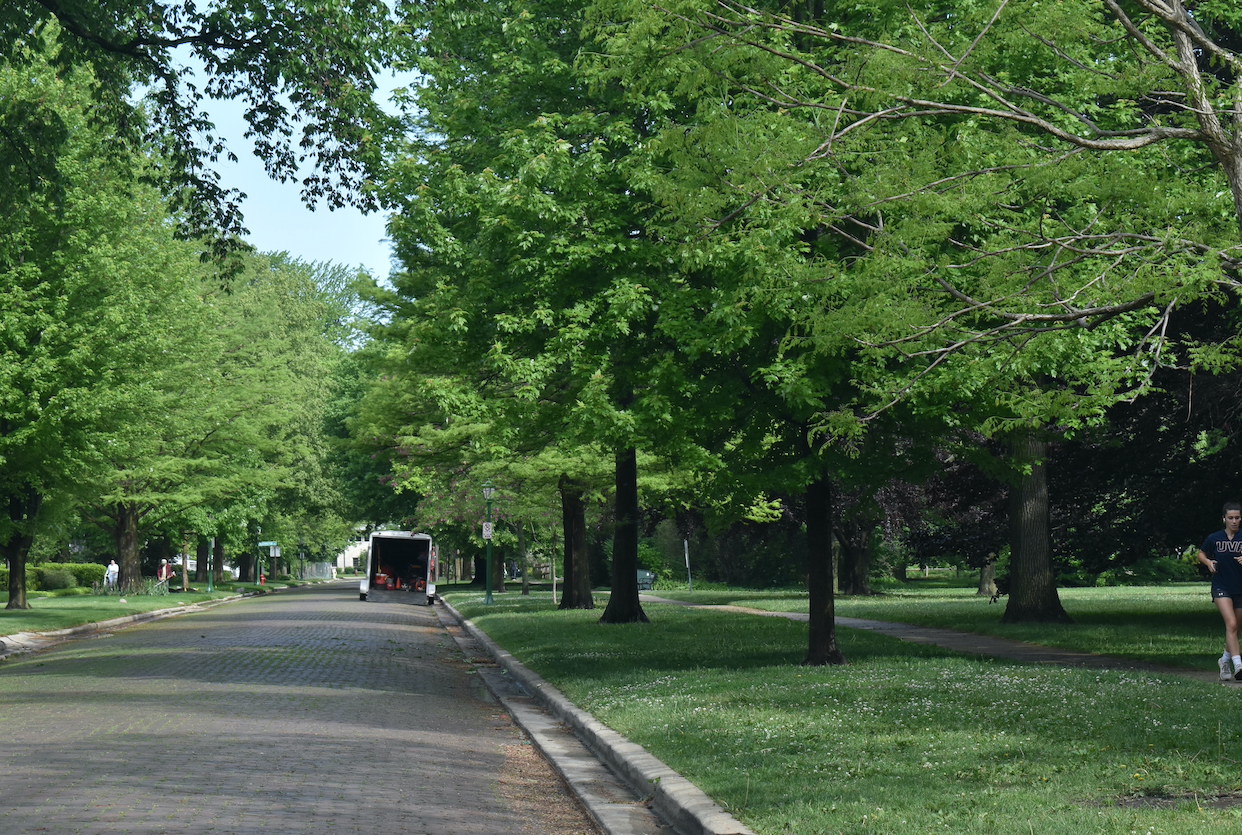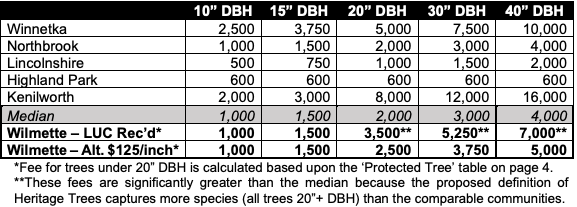
Wilmette’s mission to protect its trees is closer to fruition after four-hour meeting
It was a long night for the Wilmette Village Board as trustees worked to hammer out details of the village’s proposed tree preservation ordinance.
The board’s regular meeting on Tuesday, Feb. 22, was just over four hours, the majority of which was spent discussing the Village’s goal of protecting Wilmette’s healthy trees.
The board discussed raising fees for taking down healthy trees, limiting areas where trees can be removed, outlining additional steps residents must take to remove them, and providing an opportunity for neighbors to object to a tree-removal request.
Village staff made several changes to the proposed ordinance following feedback from community members at the board’s Feb. 8 meeting.
The thoughts of those speaking at the Feb. 22 meeting were much different with many of the nearly 30 speakers saying they not only supported the proposed ordinance but also that the board shouldn’t make any changes and approve it as-is. Others asked clarifying questions, some thought the proposals were too restrictive to homeowners, and a few speakers took issue with the proposed fees for tree removal.
The fee discussion took up a significant portion of the board’s time. Currently, the village charges $29 to remove a healthy tree that is 10 inches in diameter at breast height, also called DBH, according to village documents. That fee can be paid immediately, and a replacement tree is not required.

Under amendments to the ordinance, there would be a requirement to replace trees of a certain size. There would also be fees of up to $175 per inch (diameter) in lieu of a tree replacement. The proposal specifically focuses on heritage trees, defined by the village as oak and hickory trees with at least 10-inch DBH, and any tree 20 inches or greater.
The fees would be waived if the tree in question is dead, dying or decaying.
Trustee Dan Sullivan wondered if the fees were too high. He asked for more information on what impact this would have on residents and wanted to make sure the board was clear on why they were proposing the fees.
“My point being is I want to be able to say, here’s what we think our tree fee will generate and here’s what we’re going to do with this and why we’re not overcharging, or we’re charging appropriately and how we’re using the residents’ money,” Sullivan said.
The board clarified multiple times that the purpose of the tree ordinance is not to generate revenue; rather, it is to protect the town’s tree canopy.
Sullivan also wants to make sure residents know where the fee revenue is going and wanted to know whether, during property construction, if tree-removal costs would fall to the developer or the homeowner.
Trustee Gina Kennedy, a member of the village’s Land Use Committee, said they looked at neighboring communities’ fees for tree replacement and based the proposal on those.
“We figured if this level of fees is working in the villages around us, then unless there’s some reason to think that we’re different — and we couldn’t think of a reason why we would be different — following their model made a lot of sense,” she said.
The meeting’s length kept the board from a final decision, but trustees agreed to continue the discussion at the next board meeting on March 8.
Another lengthy portion of the discussion was related to to removal of heritage trees in the side yards of homes.
I’m just really happy with our discussion tonight in general. For the most part, we’re there. And for the most part, we’re going to get a tree ordinance that’s really going to hopefully preserve a lot of trees.” Senta Plunkett, Wilmette village president
The initial proposal stated that tree removal in the side yards would be subject to administrative review. In reaction to public comment, village staff came up with two alternatives. One allows for a 3-foot excavation area into the side yards for narrower lots and any tree outside that area would be subject to administrative review. The other delays action on the side yards to collect data and to consider a waiting period for tree removals during the data-collection phase.
Trustees were split on this proposal, with some suggesting the creation of a third alternative to combine the other two.
Trustee Peter Barrow, another member of the Land Use Committee, said a delay will hinder the village’s efforts to protect trees.
“By delaying taking any action, we don’t (protect trees) whatsoever,” he said. “We in fact encourage the removal of the side yard heritage trees, and the only protection, if you will, is just trying to convince somebody that, ‘Well, you shouldn’t do it,’ and that doesn’t seem very strong to me.”
Barrow suggested that data would be collected via the administrative review process.
“We need to protect the heritage trees now in a process that allows us to learn, and in a year, or sooner, if we need to make changes we will,” he said. “But in the meantime, we’ll have effective protection, and delay doesn’t do that at all.”
Trustee Kathy Dodd supported delaying action, saying that the rest of the proposal does so much to protect trees already.
“We don’t have to do everything right now,” she said. “We don’t, and we want to be very thoughtful in what we’re trying to do, and we have been very thoughtful and we have spent a lot of time on this.”
Trustees did agree on a change to the neighbor-notification process. The first proposal allowed neighbors to object to tree removal and the applicant to make their case to the Zoning Board of Appeals. The new proposal allows neighbors to share their concerns to administrative review, which would then weigh the concerns of all involved and make a decision.
While there is some discussion remaining, Village President Senta Plunkett said she believes that trustees are close to passing the ordinance.
“I’m just really happy with our discussion tonight in general,” she said. “For the most part, we’re there. And for the most part, we’re going to get a tree ordinance that’s really going to hopefully preserve a lot of trees.”
Village Manager Mike Braiman told trustees that he will take their feedback and create more refined proposals for discussion on March 8.
The Record is a nonprofit, nonpartisan community newsroom that relies on reader support to fuel its independent local journalism.
Become a member of The Record to fund responsible news coverage for your community.
Already a member? You can make a tax-deductible donation at any time.

Peter Kaspari
Peter Kaspari is a blogger and a freelance reporter. A 10-year veteran of journalism, he has written for newspapers in both Iowa and Illinois, including spending multiple years covering crime and courts. Most recently, he served as the editor for The Lake Forest Leader. Peter is also a longtime resident of Wilmette and New Trier High School alumnus.


